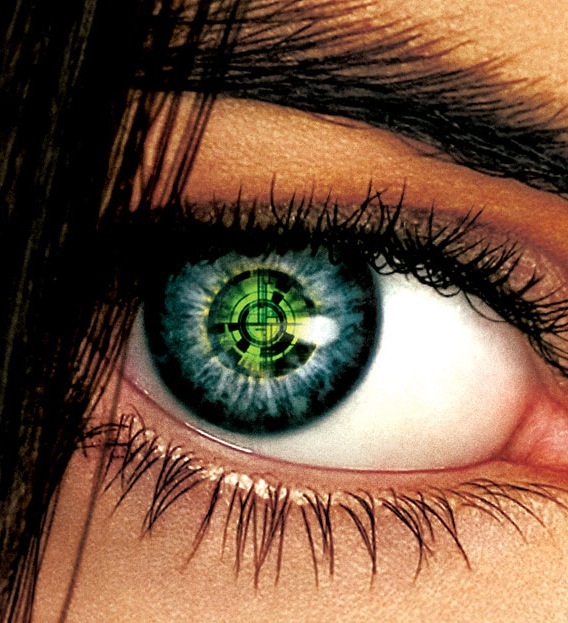I’ve been wanting to do a nice post showing the basics of augmented reality for those that might be new to the technology, but Rusty has saved me the trouble by making this nice post explaining the basics.
I’m going to expand on his AR primer. Rusty breaks down his three components of augmented reality: the head-mounted display, tracking/orientation and portable computer. Hopefully I can add something to the conversation.
1) Head-Mounted Display
The head-mounted display is probably the direction that the technology is headed with the ultimate goal a seamless interface with the body such as DARPA’s see-through AR contact lenses.

We’re a long ways off from DARPA’s dreams. Even the head-mounted displays have a number of hurdles to get over: comfort, fashion, usability and one of the most important for me, non-motion sickness inducing. I’m not a fan of puking.
In the interim, we’re going to have to get used to the projector. The projector is the digital hand-held version of the old stag film reel-to-reel, minus the stag film, and the cigar smoke. If you haven’t seen the possibilities of the projector, then you haven’t seen the ubiquitous video from TED about the Sixth Sense (and no, you do not see dead people).
2) Tracking and Orientation
Two versions of tracking exist–markers and markerless. Markers use a piece of paper with a block symbol on it. It’s also called papervision. The GE marker is a good example of a papervision symbol.
The second version is markerless and relies on visual cues like corners to orient the camera in real space. Due to the wide variety of topographical landscapes (empty rooms, lush forests, busy streets, etc), markerless technology can be a little laggy. However, it allows freedom from your printer and can be used anywhere. This video shows a nice markerless example including impressive shadows on a virtual object.
3) The Portable Computer
Ok, you’ve got me here. I don’t have anything to add to the portable computer, or iPhone, as we call it these days. But I do have a fourth category, and that is the interface method.
4) Interface Method
At first, we’re only going to be using our iPhones to control our AR systems, but what happens when we have a head-mounted display? Do we really want to access our system with a touch screen? Probably not.
There are a number of different possibilities to the interface method. They are broken down into the four Ts (taken from the Pew Internet & American Life Project): touch, talk, typing and think. The last option may seem a bit futuristic, but the future is now with options such as the Neural Impulse Actuator.
So hopefully I’ve enhanced Rusty’s excellent primer of augmented reality.
Now back to your regularly scheduled reality.

I like the expansion. Great post!
[…] Looking for an AR primer? Rusty Henderson has one covering the basics (with many videos), and Tom Carpenter has some more details. […]